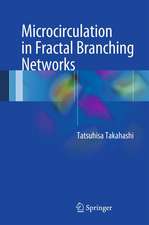Exercise testing in cardiology
Editat de Jean-Marc Foult Traducere de Olivier Hoffman Editat de Bernard Attal, Alain Ducardonnet, Laurent Uzan, Jean-Claude Verdier, Pierre Weinmannen Limba Engleză Paperback – 4 ian 2010
Preț: 192.87 lei
Preț vechi: 203.03 lei
-5% Nou
36.92€ • 40.11$ • 31.03£
Carte tipărită la comandă
Livrare economică 21 aprilie-05 mai
Specificații
ISBN-10: 228799498X
Pagini: 93
Ilustrații: V, 90 p.
Dimensiuni: 130 x 210 x 15 mm
Greutate: 0.09 kg
Ediția:2009
Editura: Springer
Colecția Springer
Locul publicării:Paris, France
Public țintă
Professional/practitionerCuprins
Physiology — Pathophysiology: back to basics.- Exercise testing.- Exercise testing and expired gas analysis.- Radionuclide myocardial perfusion imaging.- Conclusion.
Textul de pe ultima copertă
A century of technical progress, critical analyses, and clinical comparisons have shaped exercise testing in cardiology as we know it today: a simple, noninvasive physiological test that yields irreplaceable information on an individual’s physical capacity and ischemic risk. Increasingly prescribed, exercise testing is one of the mostly commonly used medical examinations worldwide. It is both diagnostically and prognostically valuable, and is optimized when combined with myocardial perfusion imaging.. Its indications are broadened every day and there is a good chance that each and every one of us has had, or will one day have, an exercise test.This short and precise book follows a pragmatic and hands-on approach to help physicians who prescribe exercise testing to identify its indications, advantages, and limits. And in interpreting the findings they will find invaluable help in the section entitled: What should be done with exercise test results? As for those who perform exercise tests—whether beginners or experts—they will find in these pages precious details and facts that can be profitably employed in their everyday practice.
Caracteristici
Descriere
A century of technical progress, critical analyses, and clinical comparisons have shaped exercise testing in cardiology as we know it today: a simple, noninvasive physiological test that yields irreplaceable information on an individual’s physical capacity and ischemic risk. Increasingly prescribed, exercise testing is one of the mostly commonly used medical examinations worldwide. It is both diagnostically and prognostically valuable, and is optimized when combined with myocardial perfusion imaging.. Its indications are broadened every day and there is a good chance that each and every one of us has had, or will one day have, an exercise test. This short and precise book follows a pragmatic and hands-on approach to help physicians who prescribe exercise testing to identify its indications, advantages, and limits. And in interpreting the findings they will find invaluable help in the section entitled: What should be done with exercise test results? As for those who perform exercise tests—whether beginners or experts—they will find in these pages precious details and facts that can be profitably employed in their everyday practice.




























